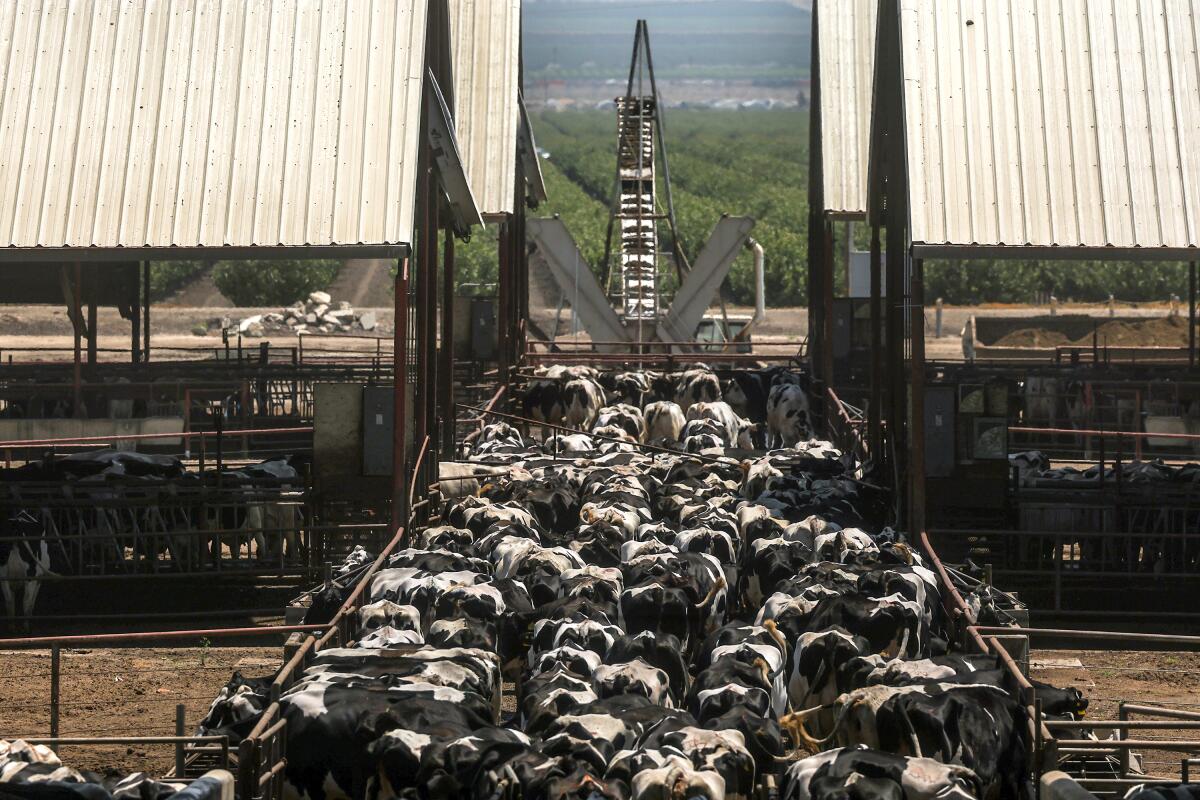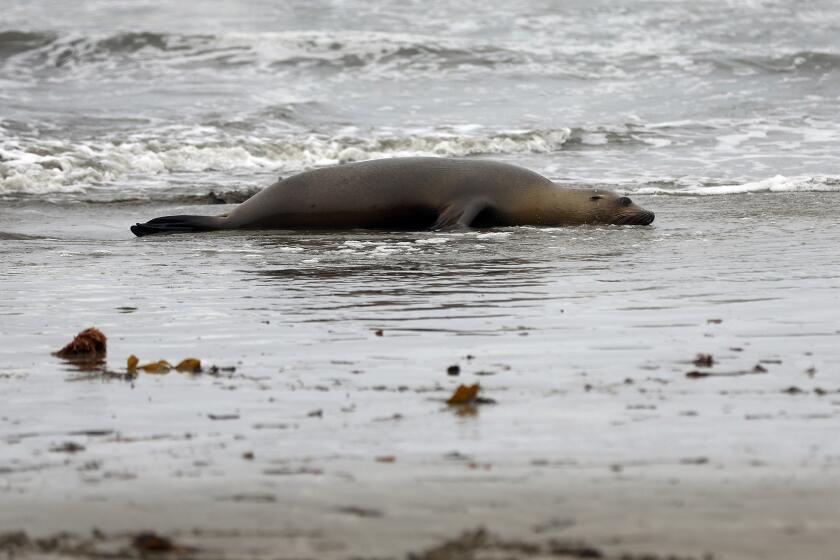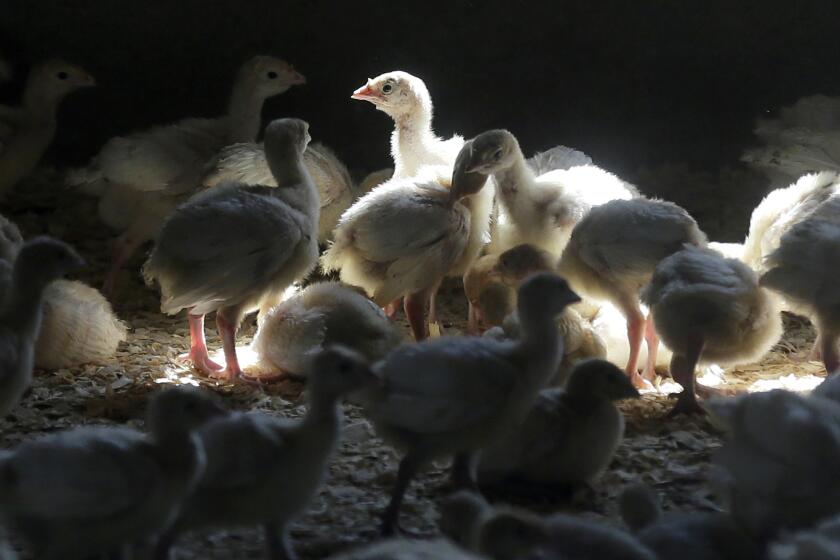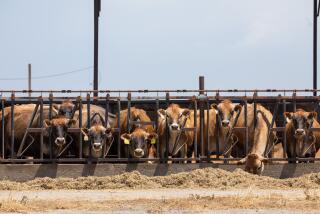H5N1 bird flu infections suspected in California dairy herds

- Share via
The California Department of Food and Agriculture said Thursday that H5N1 bird flu is suspected to have infected three dairy herds in the state.
In a news release, officials said they were investigating the possible introduction of highly pathogenic avian influenza at three dairy farms in the Central Valley. The presence of the virus has not yet been confirmed.
Should tests confirm the presence of the virus, health officials said, “it is important to note that pasteurization is fully effective at inactivating the virus and there is no milk or dairy product safety concern for consumers.”
Unprecedented deaths of sea lions along California’s Central Coast
The virus has been detected in cattle in 13 states and 193 herds. If the virus is confirmed, that number would expand to 14 states and 196 herds.
Agency officials said they’ve been closely monitoring the situation since the outbreak was first reported in March, and have been working with private veterinarians, farmers and ranchers, and local, state and federal agencies “to develop response plans and actively monitor for the disease in livestock and poultry throughout California.”
If the cases are confirmed, the agency will work with the state’s department of public health, as well as local agricultural and public health departments, “to understand the extent of the introduction and support animal health and public health activities with the goal of limiting exposure to virus while the impacted herds develop immunity.”
No details about the location of the herds were provided, other than they are in the Central Valley — which is 18,000 square miles, or roughly 11% of California’s land area.
Officials urged farmworkers, others to get the seasonal flu vaccine. An ‘exchange of genetic material’ between human and avian flu viruses is an unsettling scenario.
Details about whether the milk has gone into retail circulation were unavailable.
“This is really sad news, but not surprising,” said Rick Bright, a virologist and the former head of the U.S. Biomedical Advanced Research and Development Authority. He said the H5N1 virus “has become entrenched in dairy cattle across the U.S., and what has recently seemed like a lull in reporting likely reflects a lull in testing.”
He said there is little being done to control the virus or to provide adequate protection “to people who work closely with infected animals.”
He said he worried that when “fall and winter months arrive, there will be increased risk of having avian and human flu viruses mix. ... It’s critical that we have a stringent surveillance and testing program in place for animals and people before the flu season arrives.”
The 2009 North American swine flu virus epidemic was a mixture of human, bird and two swine flus.
California ranks as the largest producer of dairy in the nation. It has about 1,300 dairy farms and 1.69 million dairy cows. The state produces nearly 20% of all U.S. milk.
The Central Valley is a corridor for wild bird migration and a hot spot for commercial poultry operations. However, according to the U.S. Department of Agriculture’s bird flu tracker for commercial poultry, there have been no commercial outbreaks in the last 30 days and just two in backyard flocks in California.
The San Joaquin Valley — the southern extent of the Central Valley — is also home to more than 90% of California dairy cows at farms with more than 500 head.









